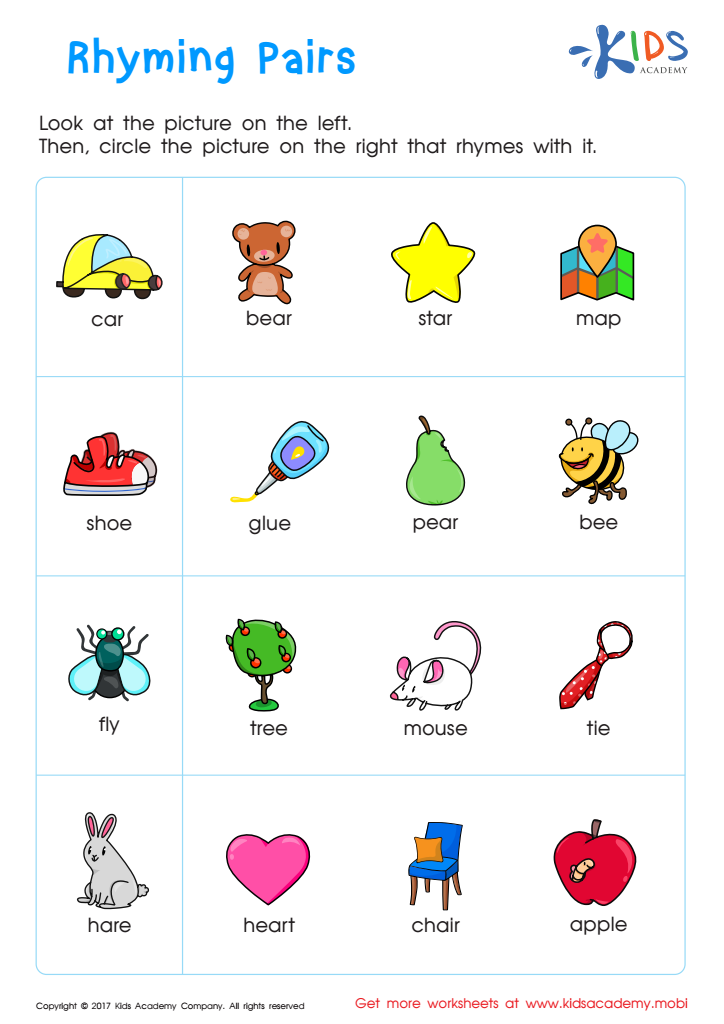Vocabulary enhancement Normal Rhyming Worksheets for Ages 6-9
8 filtered results
-
From - To
Enhance your child’s vocabulary with our engaging Normal Rhyming Worksheets, specially designed for ages 6-9. These fun and interactive activities promote language development while introducing students to rhyming words. Through a variety of exercises, children will learn to recognize, categorize, and create rhyme pairs, boosting their linguistic skills in a playful manner. Perfect for at-home practice or classroom use, these worksheets will captivate young learners and make vocabulary building enjoyable. Surprise your children with these delightful exercises that encourage creativity and critical thinking, setting a strong foundation for their reading and writing journey! Explore our collection today!
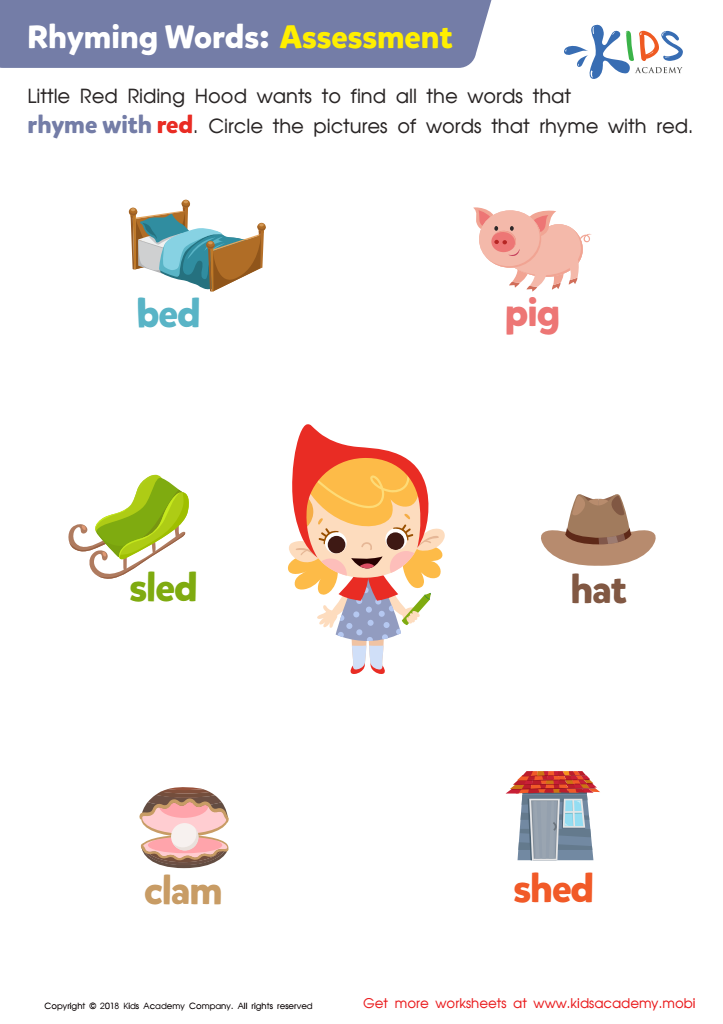

Rhyming Words: Assessment Worksheet
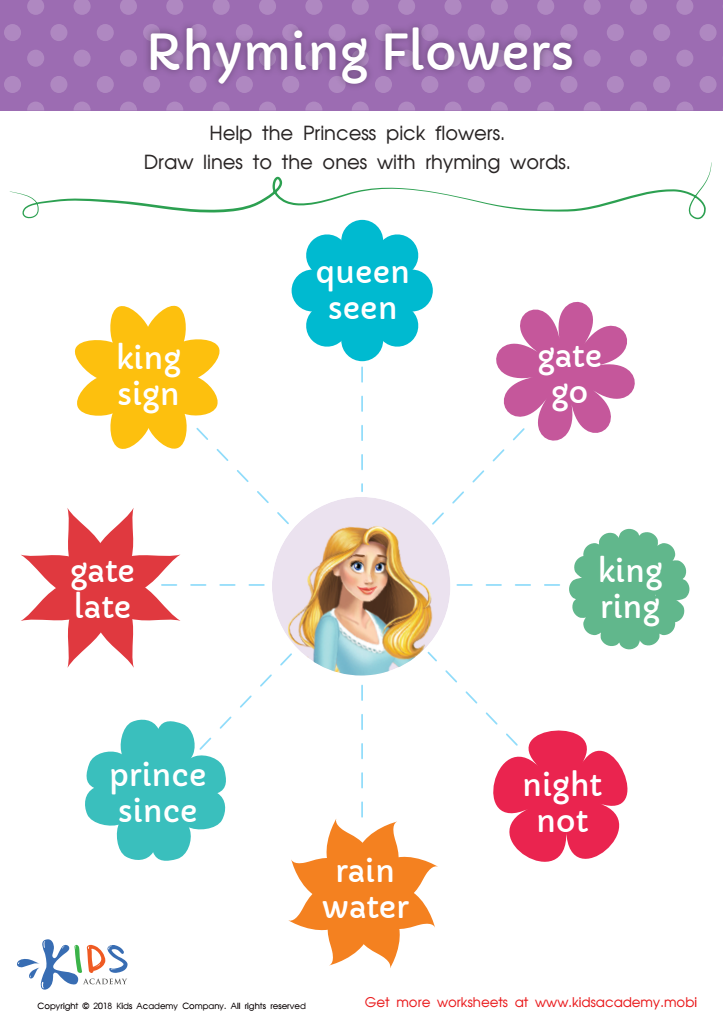

Rhyming Flowers Worksheet


Rhyming Words Rhyming Worksheet
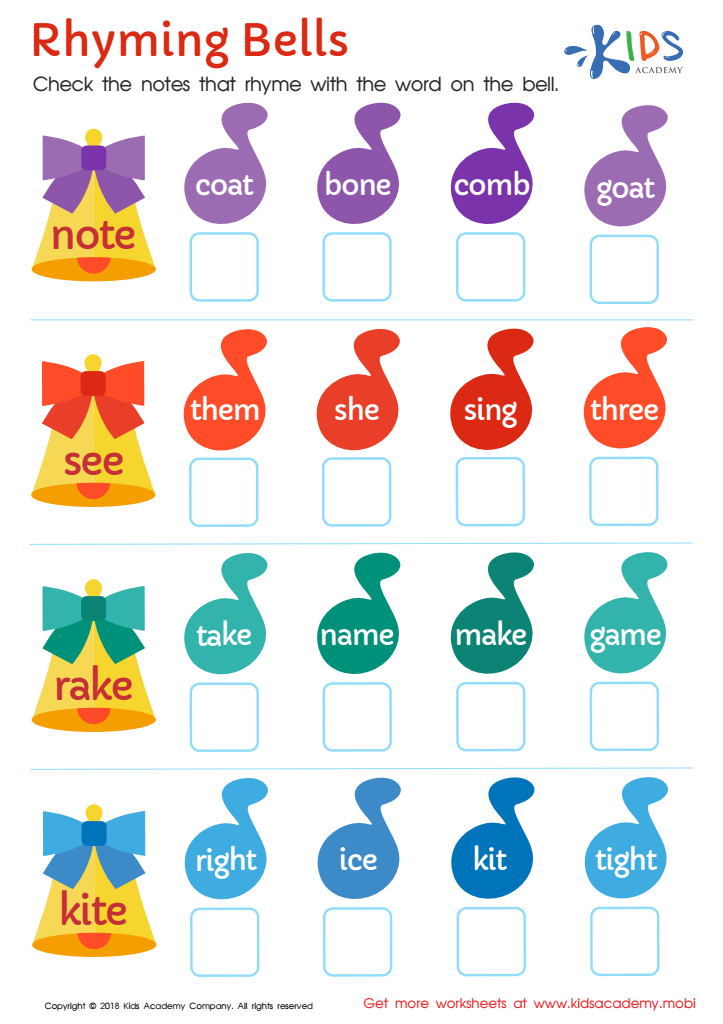

Rhyming Bells Worksheet
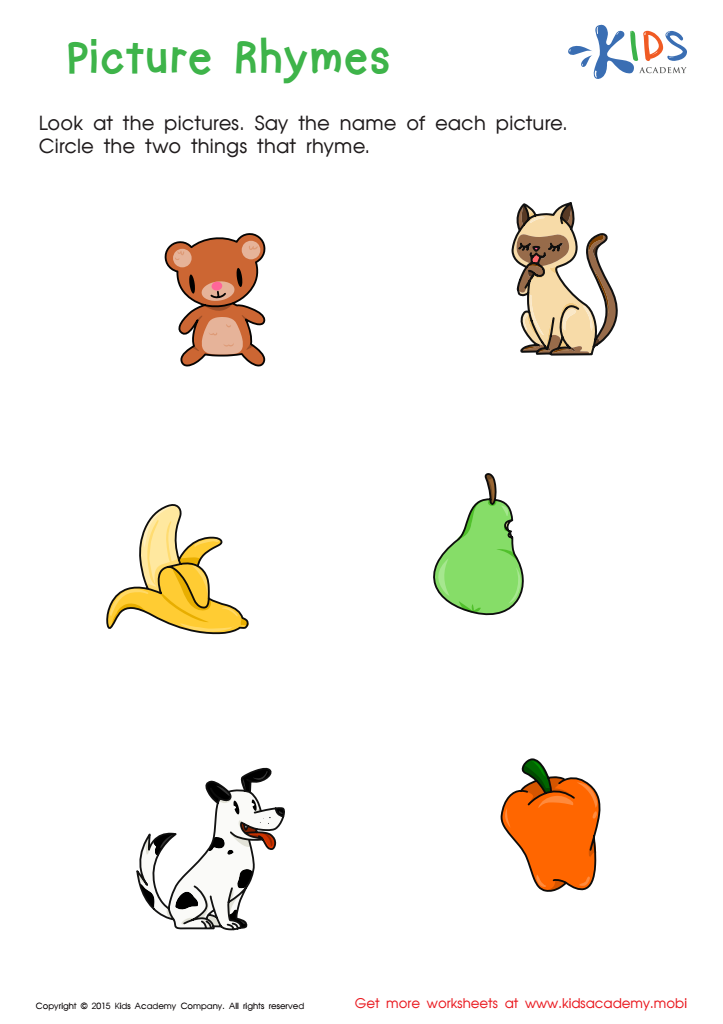

First Words: Picture Rhymes Worksheet
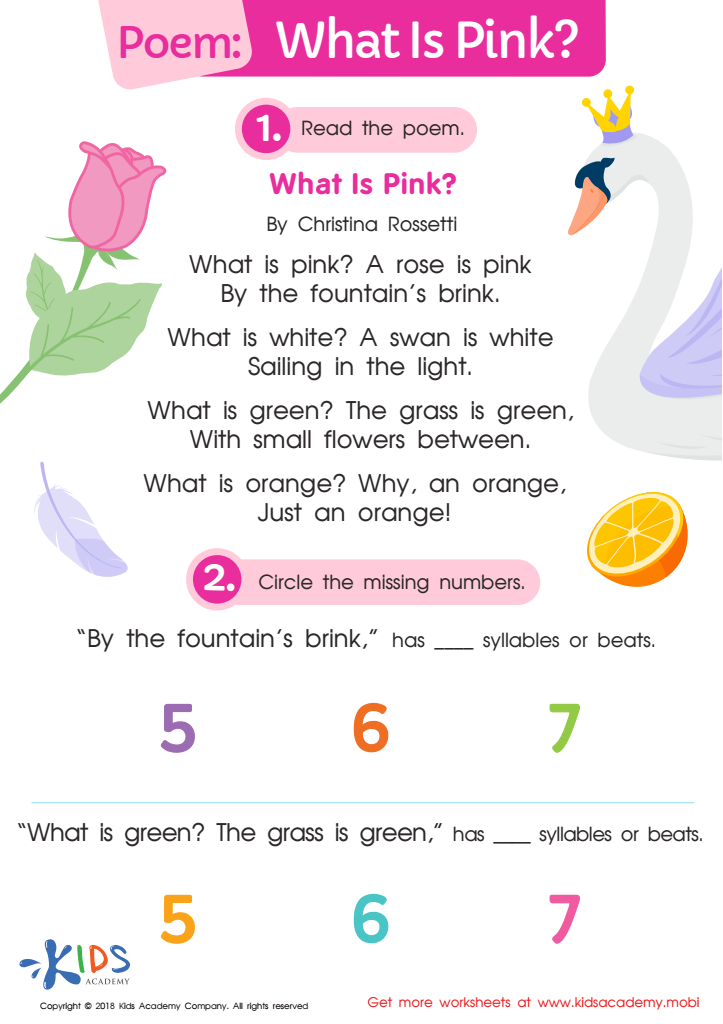

Poem: What Is Pink? Worksheet
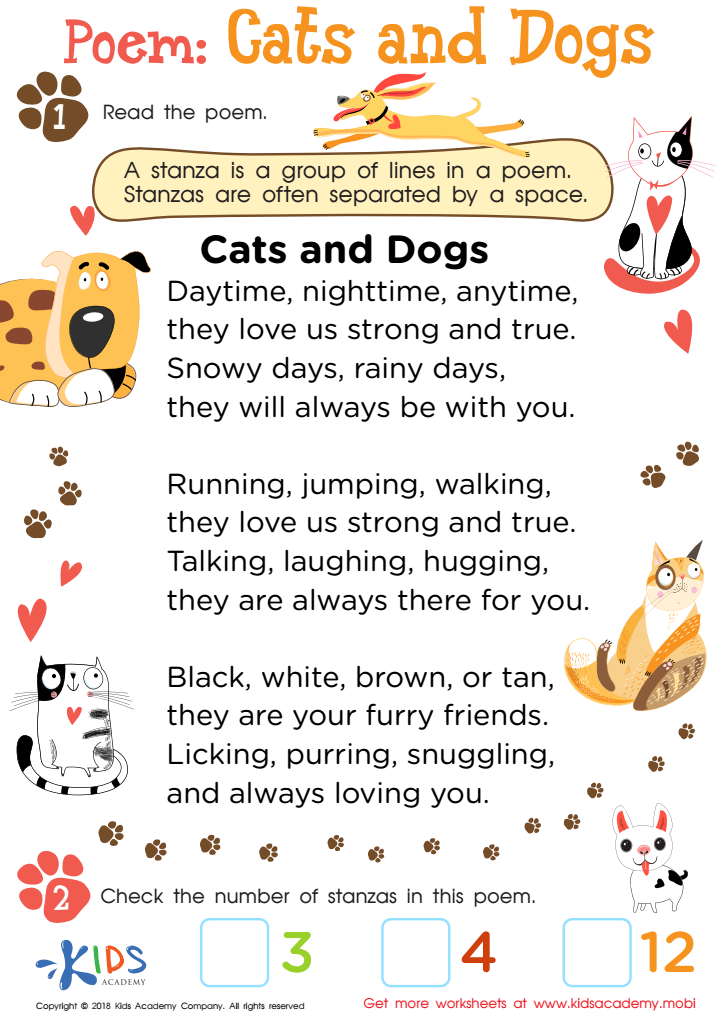

Poem: Cats and Dogs Worksheet
Vocabulary enhancement through normal rhyming is crucial for children aged 6-9 because it significantly supports their language development and literacy skills. During these formative years, children are rapidly expanding their vocabulary, and integrating rhymes makes this process fun and engaging. Research shows that when children are exposed to rhythmic patterns and sounds, they develop phonemic awareness—the ability to hear, identify, and manipulate phonemes, which is a foundational skill for reading.
Rhyming encourages cognitive connections between words, making it easier for children to remember and utilize new vocabulary in their own speech and writing. Furthermore, it enhances listening skills and introduces basic linguistic concepts such as syllables and intonation. Parents and teachers can also utilize rhymes to teach new words in context, thereby improving comprehension.
Importantly, rhyming activities can build a child’s confidence in language use. When children play with words and enjoy the sounds they create, they become more enthusiastic about reading and communication. Overall, promoting vocabulary enhancement through normal rhyming lays a vital foundation for literacy and critical thinking skills, while nurturing a love for language in children. As they engage with rhymes, they embark on a joyful journey toward effective communication.
 Assign to My Students
Assign to My Students
